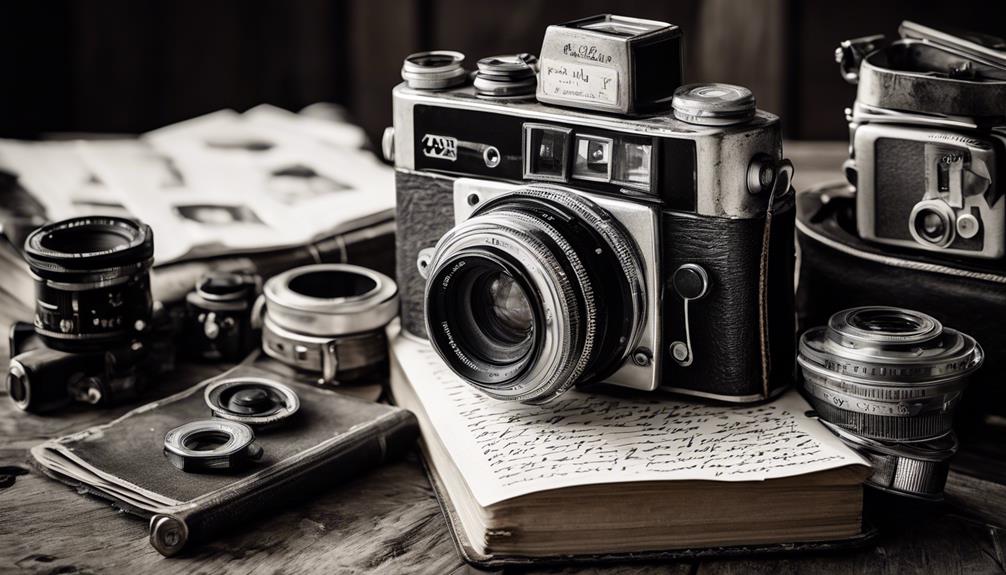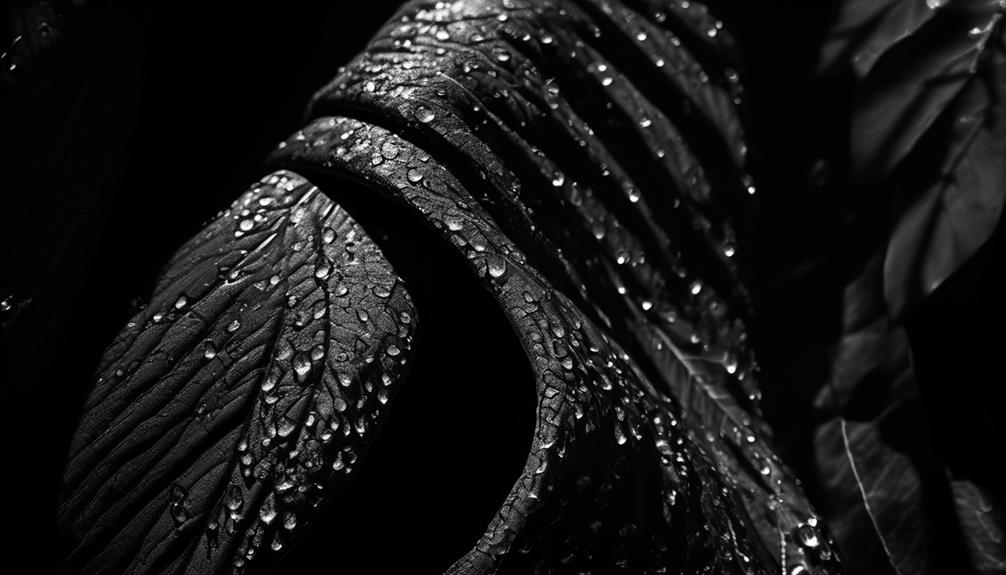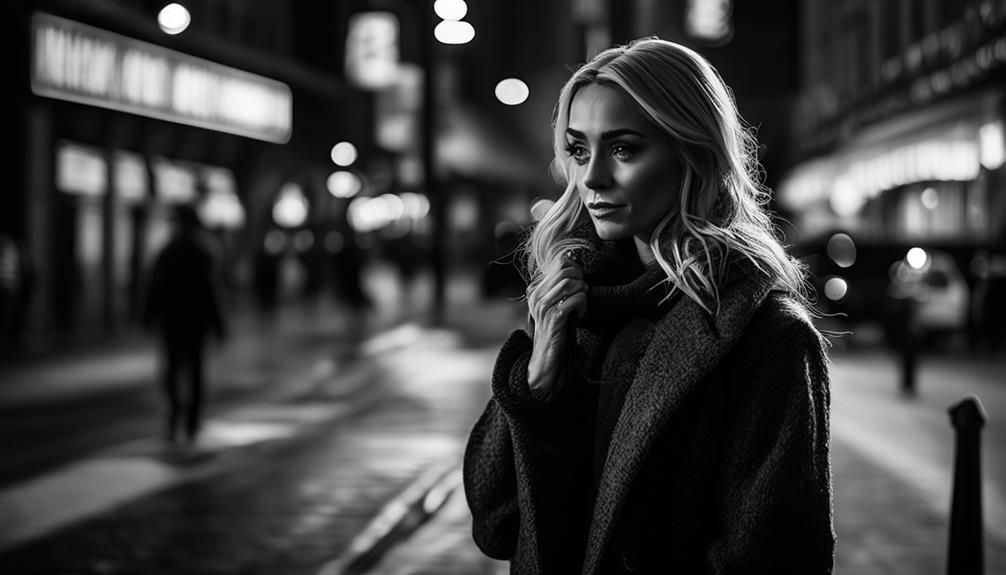Please note this post may contain affiliate links picked by me (Jay) that I have deemed may be of interest or relevant to you the reader of this.
These links do not affect the cost of the thing if you decide to purchase but i may get a little money if you choose to purchase.
For more information on my affiliate link policy click here.
In the vast world of photography, there are countless techniques and styles that capture the eye and ignite the imagination. However, there is one particular style that has stood the test of time, evoking a sense of nostalgia and elegance like no other: monochrome photography.
The power of black and white images lies in their ability to strip away the distractions of color, leaving behind a raw and powerful essence. As a photographer, I have discovered three key inspirations that have shaped my understanding of monochrome photography basics.
These inspirations, rooted in the play of light and shadow, the celebration of texture and contrast, and the exploration of moody atmospheres, have allowed me to capture moments that transcend time and evoke a range of emotions.
So join me on this journey as we uncover the secrets behind the timeless allure of monochrome photography.
Key Takeaways
- Positioning the subject and working with low light conditions can create striking contrasts and enhance shadows in monochrome photography.
- Side lighting or backlighting can be used to enhance texture, and adjusting the intensity of light can control contrast.
- Moody atmospheres can be created by playing with contrasting light and shadow, simplifying the composition, utilizing high contrast editing, incorporating subtle color toning, and emphasizing textures.
- Timeless elegance can be portrayed through minimalistic composition, removing distractions, utilizing black and white storytelling, manipulating contrast and tonality, and capturing moments that exude grace and sophistication.
Capturing Dramatic Shadows
To capture truly dramatic shadows in monochrome photography, I always position my subject in such a way that the light creates striking contrasts and adds depth to the composition. One of the key elements in achieving this effect is working with low light conditions.
By intentionally seeking out environments where the light is dim or scarce, I'm able to create a mood that's both mysterious and captivating. Shadows become more pronounced, allowing for a greater range of tonal values in the image.
In these low light situations, it's important to pay close attention to the direction of the available light. By positioning the subject in a way that the light source is coming from the side or slightly behind, I'm able to create strong contrasts and enhance the three-dimensional quality of the photograph. This creates a sense of depth and adds an extra layer of visual interest to the composition.
Another technique I employ is using high contrast lighting to emphasize the shadows. By utilizing a combination of natural light and artificial sources, such as spotlights or reflectors, I'm able to create dramatic and dynamic images. The interplay between light and shadow creates a sense of tension and intrigue, drawing the viewer into the photograph.
Capturing dramatic shadows in monochrome photography isn't only about technical skill, but also about having a keen eye for composition and the ability to see the potential in any given situation. It's about pushing the boundaries, experimenting with different lighting conditions, and daring to be innovative. By embracing the challenges that low light and high contrast present, I'm able to create images that are visually stunning and emotionally compelling.
Emphasizing Texture and Contrast
Emphasizing texture and contrast in monochrome photography allows me to create visually captivating images that engage the viewer's senses. By manipulating light and employing composition techniques, I can transform a simple subject into a work of art that evokes emotion and intrigue.
Lighting techniques play a crucial role in emphasizing texture and contrast. By using side lighting or backlighting, I can create dramatic shadows and highlights that enhance the overall texture of the subject. This adds depth and dimension to the image, making it visually striking and captivating. Additionally, by adjusting the intensity of the light, I can control the level of contrast, creating a dynamic range of tones that adds visual interest.
Composition techniques also play a vital role in emphasizing texture and contrast. By carefully selecting the angle and framing of the shot, I can highlight the intricate details and patterns in the subject, emphasizing its texture. Using leading lines or framing techniques, I can create a sense of depth and draw the viewer's attention to the contrast between different elements in the image.
Incorporating these lighting and composition techniques into my monochrome photography allows me to create images that aren't only visually appealing but also thought-provoking. It enables me to capture the essence of the subject, revealing its unique texture and creating a powerful visual experience for the viewer.
Exploring Moody Atmospheres
By immersing myself in the exploration of moody atmospheres, I'm able to infuse my monochrome photography with a captivating and evocative ambiance that draws the viewer into a world of emotion and mystery.
Moody atmospheres are all about creating a sense of drama and intrigue through carefully crafted lighting techniques and editing styles. Here are five key elements that I incorporate into my work to achieve these mesmerizing effects:
- Contrasting Light and Shadow: Playing with the interplay of light and shadow adds depth and dimension to my images, creating a sense of tension and allure.
- Minimalist Composition: Simplifying the composition allows the viewer to focus on the emotions and mood evoked by the scene, enhancing the overall impact of the photograph.
- High Contrast Editing: Utilizing high contrast editing techniques intensifies the mood and accentuates the details, resulting in a more dramatic and atmospheric image.
- Subtle Color Toning: Incorporating subtle color toning in monochrome photography can add a touch of warmth or coolness, enhancing the overall mood and atmosphere.
- Emphasizing Textures: Textures play a vital role in creating a moody atmosphere. By highlighting the textures in my subjects, I'm able to add depth and intrigue to the overall image.
Portraying Timeless Elegance
In my pursuit of capturing timeless elegance, I immerse myself in the art of monochrome photography, skillfully crafting images that exude grace, sophistication, and a sense of enduring beauty.
To achieve this, I embrace the concept of minimalistic composition and black and white storytelling.
Minimalistic composition is about distilling an image to its essence, removing any distractions and focusing on the subject at hand. By eliminating color, I'm able to emphasize the form, shape, and texture in a way that creates a visual impact. This simplicity allows the viewer to fully appreciate the elegance and beauty that lies within the frame.
Black and white storytelling is a powerful tool that transcends time. It allows me to create a narrative that isn't bound by the limitations of color, but rather relies on the interplay of light and shadow. Through careful manipulation of contrast and tonality, I can evoke emotions and evoke a sense of nostalgia.
In my monochrome photographs, I strive to capture moments that are timeless and enduring. Whether it's a portrait, landscape, or still life, I aim to convey a sense of sophistication and grace that will resonate with viewers for years to come.
Conveying Emotion Through Simplicity
Simplicity is the key to unlocking the raw and powerful emotions that can be conveyed through monochrome photography. When we strip away the distractions of color, we're left with a pure and minimalist canvas that allows us to focus on the essence of the subject. This simplicity enables us to create images that evoke strong emotions and resonate with the viewer on a deeper level.
How can we effectively convey emotion through simplicity in monochrome photography? Here are five key ideas to consider:
- Minimalist aesthetics: Embrace the power of negative space and keep your compositions clean and uncluttered. Allow the subject to shine and let the viewer's imagination fill in the gaps.
- Symbolic representation: Utilize visual symbols and metaphors to convey emotions without relying on color. Explore the use of light and shadow, textures, and juxtapositions to create powerful visual narratives.
- Contrast and tonality: Play with the range of tones from pure blacks to bright whites to create drama and evoke powerful emotions. Use contrast to highlight the subject and guide the viewer's eye.
- Composition and framing: Pay attention to the placement and arrangement of elements within the frame. Experiment with different angles and perspectives to create visual impact and convey emotions effectively.
- Subtle details: Focus on capturing the small nuances and details that can speak volumes. Look for the subtle gestures, expressions, and textures that can add depth and emotion to your images.
Through simplicity, we can create monochrome photographs that speak directly to the heart and soul of the viewer. Embrace the power of minimalism and symbolic representation to unlock the true emotional potential of your images.
Frequently Asked Questions
How Do I Choose the Right Subject for Monochrome Photography?
When it comes to choosing subjects for monochrome photography, it's all about capturing emotions in black and white. The right subject can evoke a sense of nostalgia, mystery, or even drama.
Look for subjects that have strong contrasts in light and shadow, or interesting textures and patterns. Don't be afraid to experiment and think outside the box.
Monochrome photography is about pushing boundaries and creating unique, captivating images that leave a lasting impression.
What Are Some Common Mistakes to Avoid When Shooting in Black and White?
When shooting in black and white, it's important to avoid some common mistakes that can ruin your photos.
One of the biggest mistakes is neglecting composition. Remember to pay attention to lines, shapes, and textures to create a visually compelling image.
Another mistake isn't considering the tonal range. Make sure to capture a wide range of shades to add depth and dimension to your monochrome photos.
Can I Convert a Color Photo to Black and White After It Has Been Taken?
Yes, you can definitely convert a color photo to black and white after it has been taken. With the advancements in post-processing techniques, it has become easier than ever to transform your images.
Are There Any Specific Camera Settings or Techniques That Can Enhance Monochrome Photography?
There are definitely camera settings and composition techniques that can take your monochrome photography to the next level.
By adjusting the contrast and sharpness settings on your camera, you can enhance the dramatic effect of black and white images.
Additionally, experimenting with different composition techniques like leading lines or framing can add depth and visual interest to your monochrome photos.
These small tweaks can make a big difference in creating stunning and innovative monochrome images.
How Can I Effectively Use Lighting to Create a Striking Monochrome Image?
To create a striking monochrome image, lighting is key. Utilizing shadows can add drama and depth to your photos. Play with different angles and intensities to create interesting contrasts.
Another technique is incorporating reflections, which can add an extra layer of intrigue and visual interest to your monochrome images. Experiment with different surfaces and light sources to achieve innovative and unique results.
With the right lighting techniques, your monochrome photos will leave a lasting impression.
Conclusion
As I reflect on the beauty and power of monochrome photography, I can't help but feel a sense of awe and inspiration. It's like stepping into a world where shadows dance, textures come alive, and emotions are amplified.
Through the simplicity of black and white, we're transported to a realm of timeless elegance, where every image tells a story and evokes a profound sense of emotion.
Monochrome photography is a testament to the limitless possibilities of artistic expression, and I'm forever captivated by its allure.


